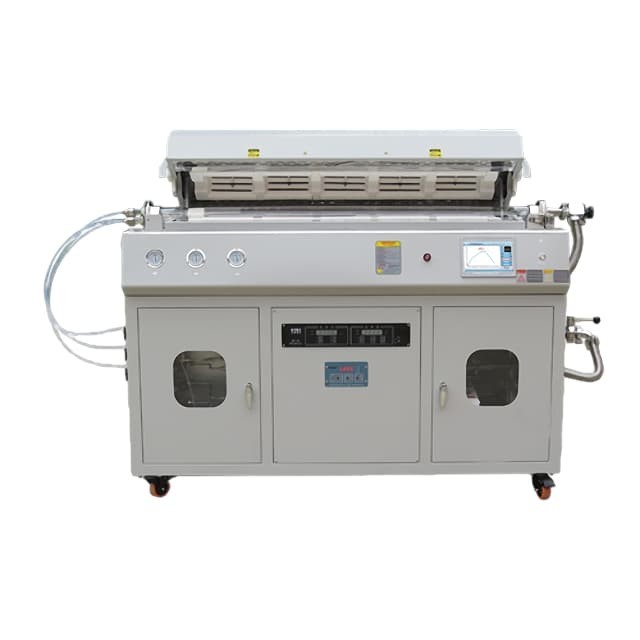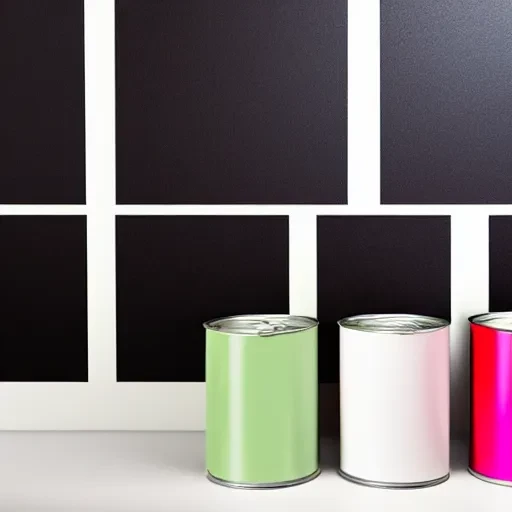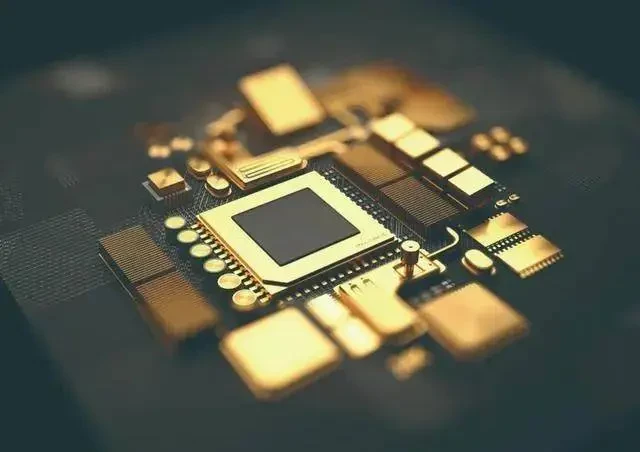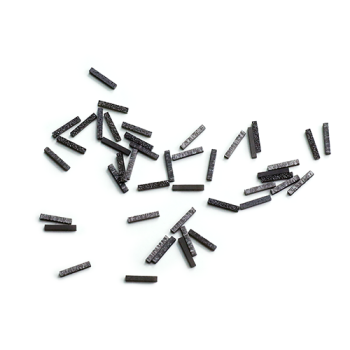Introduction to CVD Coating and Its Versatility
Chemical Vapor Deposition (CVD) coating is a popular method of depositing high-quality thin films on various surfaces. This versatile process can be used to coat a wide range of materials, including metals, ceramics, and polymers, with different types of films. CVD coatings have several advantages over other coating methods, such as high purity, density, and uniformity, making them ideal for many applications in various industries. With CVD, it is easy to modify the surface of complex shapes, irregular surfaces, and even glass. This process is also an economical way of depositing high-quality films, with lower production costs compared to other methods.
Table of Contents
Benefits of Using CVD Tube Furnace
Chemical Vapor Deposition (CVD) tube furnace is a highly efficient and precise laboratory equipment used for coating applications. CVD can deposit a wide range of materials, including metals, semiconductors, ceramics, and polymers, making it an attractive option for a broad range of applications, from microelectronics to biomedical devices.

Ability to Deposit a Wide Range of Materials
One of the significant advantages of using a CVD tube furnace for coating is the ability to deposit a wide range of materials. This versatility makes CVD an attractive option for a broad range of applications, from microelectronics to biomedical devices. CVD can deposit a variety of materials, including metals, semiconductors, ceramics, and polymers.
High-Quality, Uniform Coatings
Another major benefit of using a CVD tube furnace for coating is the ability to produce high-quality, uniform coatings. The CVD process ensures that the coating is deposited evenly and consistently across the entire substrate, resulting in a uniform and high-quality coating. This is especially important for applications where the coating's thickness and uniformity are critical, such as in the semiconductor industry.
Cost-Effective Process
CVD tube furnace is also a highly efficient process for coating applications. Unlike traditional coating methods, such as electroplating or physical vapor deposition, CVD requires less material to produce a high-quality coating. This makes it a cost-effective option for coating large areas or complex shapes.

Suitable for a Wide Range of Applications
CVD tube furnace is an essential tool for research and development in a variety of industries, including microelectronics, energy, and biomedical devices. The ability to deposit a wide range of materials and produce high-quality, uniform coatings makes CVD an attractive option for a broad range of applications.
Ability to Produce Large-Scale Sheets of Graphene
CVD has enabled the production of large-scale sheets of graphene, which are atomically thin sheets of hybridized carbon atoms arranged in a honeycomb structure used for a very wide range of applications from large screen TV displays to water filtration systems.
In summary, the benefits of using a CVD tube furnace for coating include the ability to deposit a wide range of materials, produce high-quality, uniform coatings, a cost-effective process, suitable for a wide range of applications, and the ability to produce large-scale sheets of graphene. CVD tube furnace is an essential tool for research and development in a variety of industries, including microelectronics, energy, and biomedical devices.
Coating irregular surfaces with CVD
CVD tube furnace is a laboratory equipment used for coating complex three-dimensional surfaces with high-quality and uniform films. The CVD process is highly controllable, allowing for the precise deposition of coatings with excellent uniformity. This means that a consistent thickness of coating is achieved across the entire surface of the substrate, even on hard-to-reach surfaces.
How does CVD work for coating irregular surfaces?
The CVD process involves the transport of reactants to a substrate surface, where they react and form a solid film. In the case of coating irregular surfaces, the process is slightly different. The coating metal is formed on or near the component by thermal decomposition of a chemical compound in the coating metal. In a protective atmosphere, a chemical compound of the metal is evaporated or created in gas form away from the component to be coated. The vapor is transported by a carrier gas onto and into the component. The metal is released when the chemical compound decomposes, either by a temperature increase or by a shift in the chemical reaction balance when the metal is absorbed by the component.
Benefits of CVD for coating irregular surfaces
One of the biggest advantages of using CVD is that it can be used to evenly coat irregular surfaces, including screw threads and recesses. The process is also extremely versatile; it has been used with an extremely wide range of elements and compounds. CVD also produces a thin film with very high purity and density. Because numerous parts can be coated simultaneously, CVD is a relatively economical deposition process.
Applications of CVD for coating irregular surfaces
CVD has been used across a wide range of industries. Some organizations use it to apply coatings for wear resistance and temperature protection. Others use it to produce semiconductors for electronic devices. CVD has also been used to fabricate dense structural parts that are difficult or cost-prohibitive to make with conventional techniques.
High Purity and Density of CVD Coatings
Chemical Vapor Deposition (CVD) is a process used to create high-quality coatings with a high degree of purity and density. The CVD method is widely used in the production of thin films, and it involves the deposition of a chemical vapor onto a substrate, which then reacts with the surface to form a solid layer.
High Purity of CVD Coatings
One of the key advantages of using a CVD tube furnace for coating is the high purity of the resulting coatings. The use of high-purity gases and precursors in the CVD process ensures that the resulting coatings are free from impurities, which can affect their performance. This is because CVD uses gas coating materials, avoiding the impurities of liquid coating processes. Many manufacturers prefer CVD for coating materials that require specialized thin films at an exact desired thickness.

Uniform Coating with High Density
The high-density nature of CVD coatings means that they are highly resistant to wear and corrosion, making them ideal for use in a wide range of applications. CVD is a conformal deposition process, which means it uniformly coats a substrate regardless of the shape to produce an even coating. This method builds the desired layer from the substrate up, a significant advantage in creating conductive films. CVD coatings are also high-quality, waterproof, and fine-grained. Further, they are harder than similar materials produced by traditional manufacturing processes. This is because the reaction of volatile precursors with a substrate can create a stronger bond on the substrate’s surface.
High Control of Deposition Process
The use of a CVD tube furnace for coating offers the ability to control the deposition process with a high degree of precision. The CVD tube furnace is a popular tool for coating applications, as it provides a high degree of control over the deposition process. The temperature and pressure can be controlled to produce the desired coating thickness and quality. This level of control is essential in the manufacturing of high-performance solar power technology and other applications that require resistance to intense heating.
In conclusion, the high purity and density of CVD coatings make them ideal for a wide range of industrial and commercial applications. The use of a CVD tube furnace for coating offers a number of advantages over other coating methods, including high-quality, waterproof, and fine-grained coatings, as well as the ability to control the deposition process with a high degree of precision.
Economical Deposition Process
CVD tube furnaces are widely used in the industry for coating due to their many advantages. One of the main advantages of using a CVD tube furnace for coating is the economical deposition process. The CVD process is highly efficient and can produce coatings of high quality at a low cost.
Low Cost of Materials and Energy
The CVD process does not require a lot of energy or expensive materials, which makes it a cost-effective option for many industries. The process involves the deposition of a thin film onto a substrate using a chemical reaction in a gaseous environment. The reactive gases used in the CVD process are generally less expensive than other deposition methods, such as physical vapor deposition (PVD). Additionally, the use of a tube furnace enables the deposition of coatings on a large scale, making it suitable for mass production.
High Efficiency
The CVD process is highly efficient and can produce coatings of high quality at a low cost. The process is highly effective in terms of material utilization, with the deposition rate being close to 100%. This means that almost all of the reactive gas that is introduced into the furnace is utilized in the deposition process, with very little waste being produced. Additionally, the use of a tube furnace enables the deposition of coatings on a large scale, making it suitable for mass production.
Versatility
CVD tube furnaces are highly versatile and can be used to deposit a wide range of coatings, including metals, ceramics, and polymers. This makes it a popular choice for various applications, from electronics to aerospace. The versatility of the CVD process allows for the production of coatings with a wide range of properties, including hardness, wear resistance, and corrosion resistance. This makes it an ideal process for the production of coatings for a variety of applications.
In conclusion, the use of a CVD tube furnace for coating provides an economical and efficient method for producing high-quality coatings on a large scale. The low cost of materials and energy, high efficiency, versatility, and environmental friendliness of the process make it an ideal choice for many industries.
Applications of CVD in various industries
Chemical Vapor Deposition (CVD) is a widely used method for coating materials onto a substrate in various industries. This technique has several advantages, including precise control over the coating thickness and uniformity, high-temperature capabilities and the ability to use a wide range of source gases. As a result, CVD has found applications in different industries, including:
Semiconductor Industry
CVD is extensively used in the semiconductor industry for depositing thin films for electronic devices. The thin films deposited using CVD tube furnaces have excellent uniformity, making them ideal for use in the production of microchips. Additionally, CVD is used to deposit different materials, including silicon, silicon carbide, and aluminum oxide.
Automotive Industry
The automotive industry uses CVD for coating engine parts to improve their durability and performance. CVD coatings provide resistance against wear and corrosion, which extends the lifespan of engine components. For instance, CVD coatings are used to coat piston rings, engine valves, and other critical engine components.
Medical Industry
CVD is used in the medical industry to deposit biocompatible coatings on medical implants. The biocompatible coatings help to reduce the chances of implant rejection or inflammation, making them safe for use in humans. Additionally, CVD coatings can provide antimicrobial properties, reducing the risk of infections.
Aerospace Industry
The aerospace industry uses CVD for coating materials for use in high-temperature applications. The coatings provide resistance against oxidation and corrosion, making them ideal for use in the aerospace industry. CVD coatings are used in the production of turbine blades, rocket nozzles, and other critical components.
In conclusion, CVD is a versatile technique that has found applications in various industries, including the semiconductor, automotive, medical, and aerospace industries. CVD coatings provide excellent control over the coating thickness and uniformity, making them ideal for use in different applications. Additionally, CVD coatings provide resistance against wear, corrosion, and high temperatures, extending the lifespan of critical components in different industries.
Related Products
- Customer Made Versatile CVD Tube Furnace Chemical Vapor Deposition Chamber System Equipment
- Multi Heating Zones CVD Tube Furnace Machine Chemical Vapor Deposition Chamber System Equipment
- Inclined Rotary Plasma Enhanced Chemical Vapor Deposition PECVD Equipment Tube Furnace Machine
- Vertical Laboratory Quartz Tube Furnace Tubular Furnace
- Split Chamber CVD Tube Furnace with Vacuum Station Chemical Vapor Deposition System Equipment Machine
Related Articles
- Exploring the Key Characteristics of Tube Heating Furnaces
- The Versatility of Tube Furnaces: A Guide to Their Applications and Benefits
- Advantages and Disadvantages of Chemical Vapor Deposition (CVD)
- CVD Machines for Thin Film Deposition
- PECVD Furnace A Low-Power and Low-Temperature Solution for Soft Matter






















